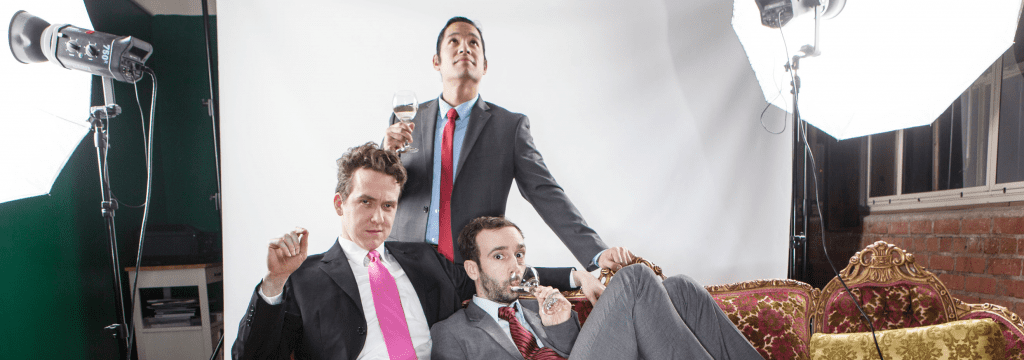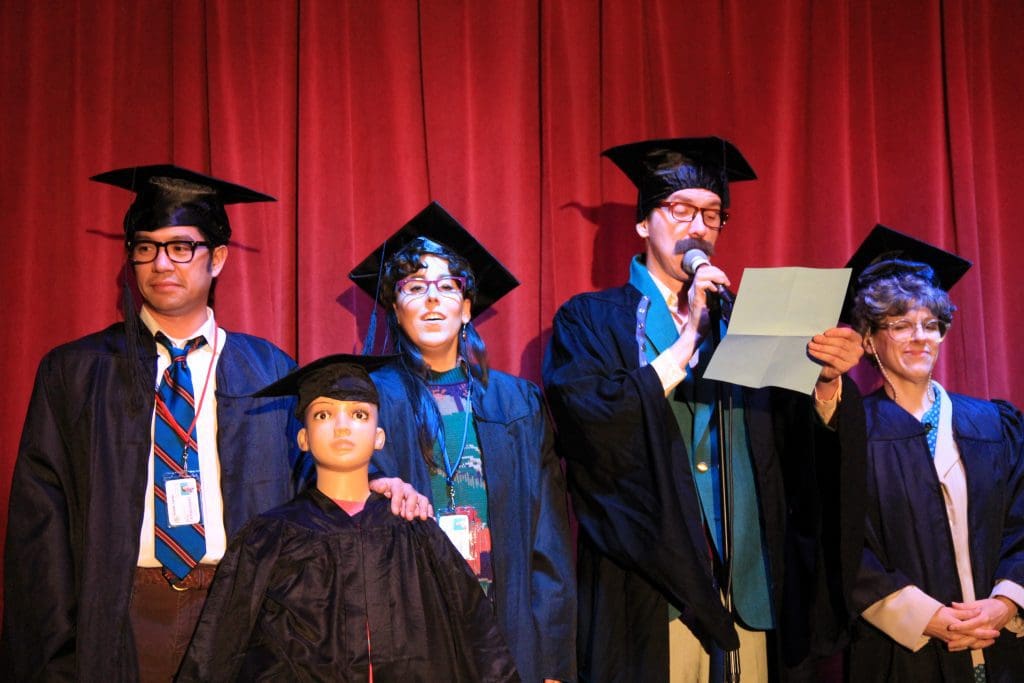Justin Jain is here to school you: Interview with Justin Jain
Way back in November, Berserker Residents co-founder Justin Jain—who can also be seen on just about any stage in Philadelphia—took the time to answer a few questions about their upcoming work at FringeArts It’s So Learning.
 FringeArts: What was the moment that you realized, we can make this into a show?
FringeArts: What was the moment that you realized, we can make this into a show?
Justin Jain: This show was a bit of a departure for us in terms of the content-container conversation. All of our past shows began with a spark of an idea for content: “Let’s make a show about a Giant Squid!” or “What if the show itself was a post-show talkback?!” This one, however, was approached form-first. Back in 2014, we began daydreaming about performing a script written entirely by school children. That was kind of our entry point into this whole adventure. But the deeper we chased that rabbit—the more we realized other groups and organizations were already doing this (most of the time, better than we could)—groups like Philly Young Playwrights and The Mantua Project. So that led us to a left turn of instead of writing with kids, how about writing about kids—about childhood, about school. We started to bounce around ideas of other elements we’d like to bring to the table—the current state of American education, breaking theatrical form and conventions, playing with Bouffon. These all started to seep into the mix.
Coming fresh from the Edinburgh Fringe Festival, our artistic sensibilities were changing. We saw so many comedy pieces that were daring their audiences to participate in ways that we tend to shy away from as American Theatre makers. So that was in the mix too—how far will an audience go in playing with us? How can the dare be a part of the narrative?
FringeArts: Can you describe the stage/setting, and what it has allowed you do play with creatively?
Justin Jain: The piece takes place in a laboratory called The SimEdu Center, and is loosely inspired by some of our team’s experience as standardized patients for different medical schools. As an SP, you become a fake patient for med students to practice different cases. We daydreamed about how this idea could be twisted for the classroom—is there a way to build a simulation machine to train students for maneuvering the labyrinth of the American k–12 school system?
Because we thrust our audience into this simulator, we want them to feel as off-balance as possible. The playing space and audience space are one in the same. When the audience first enters, there’s no chairs but merely a grid of scattered numbers on the floor. As audience members come in, they are greeted by SimEdu Center technicians (the cast), who then give each member a series of coupons that will be used in the show. I’ll keep the rest as a mystery, but suffice it to say, starting with this level of audience engagement sets the tone for what is to come.
The audience capacity for this show caps at 55—this is to create the intimacy of the classroom experience. And so we can control the more improvisational aspects that bubble out of the show. Every individual audience member is asked to engage in different ways. We’ve had audiences of over 60 and when that happens, they can sometimes turn on us and take control of the narrative. With a smaller audience, we have the ability to crowd control a bit more and tailor the show to really feel like each person can see and is seen.
FringeArts: What makes the classroom so ripe for comedic and creative potential?
As a teacher myself, I’ve worked with high school students since 2003. I’ve taught in programs that have brought me into every kind of school you can imagine in the Philadelphia region. The teachers, the students, the administration—no matter where I go—have some degree of anxiety coursing through their hallways. And every student, teacher, parent, administrator, or principal all seem to pass the buck with who’s dropping the ball. In the end, it seems to always boil down to the decisions made by an elite and mysterious few—some say it’s the school district, others cite the SRC, while others point to the government.
Regardless, this kind of bureaucracy paired with the struggle of “keeping up” in the classroom is absolutely comedic (albeit sad). We want to ping both the absurdity of the system as well as interrogate the audience’s own memories of being students in that education machine. When you open up that can of worms, the material to pull from and play with is boundless.
FringeArts: Can you describe a few of the characters, and how you went about creating them?
Justin Jain: Each performer/creator plays two roles: Their primary role is that of a technician in The SimEdu Center. These technicians are the keepers of the simulations and always have an eye on the audience’s experience and a connection to a larger ominous entity transmitting notes and adjustments throughout the event. On top of this, the technicians role-play with the audience as fictional teachers.
My technician’s avatar is a teacher named Mr. Ricks. He’s sorta your stock hip young teacher. I have a long pony tail wig and rolled-up sleeves. He’s your English/Lit teacher that would take everyone out to the tree to read poems. He’s the kind of teacher some of your classmates have a crush on and his confidence permeates both in his teaching style and his hallway banter. He’s loosely based off my own high school English-Lit teacher, Mr. B (yeah, he was one of those)—everyone had a crush on him and he would teach through a smirk while sitting on the edge of his desk.
We chose these characters to balance one another in different ways—we wanted to represent different ages and teaching styles, as well as different teacher personality-types. Of course, you can only do so much with 5 performers, but hopefully each one of us trigger a different memory for the audience. It’s important for us to capture the trajectory of moving from kindergarten through 12th grade in just 75 minutes. So we tried to choose teacher stock characters that can also matriculate through that narrative arc.
FringeArts: What did you concentrate on when fine-tuning the show?
Justin Jain: We are coming to FringeArts fresh off of a run at ASU Gammage, who is partnering us with many education-based groups in their Phoenix, AZ community. There is going to be an intensive research and development workshop period with teachers, education students, and administrators. Our first production relied heavily on the K–12 student experience and background to that was the feeling of a larger system at play. I think we’re entering our rewrites with an eye on how to punch that up, while holding on to the play and fun of our initial run.
Thanks Justin!
It’s So Learning ran at FringeArts March 10–18, 2017.
Interview by Josh McIlvain



